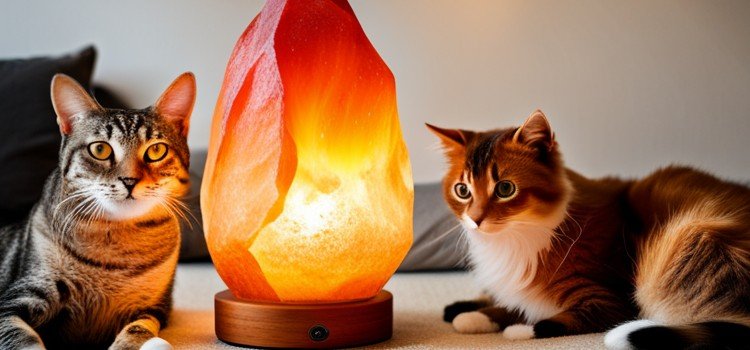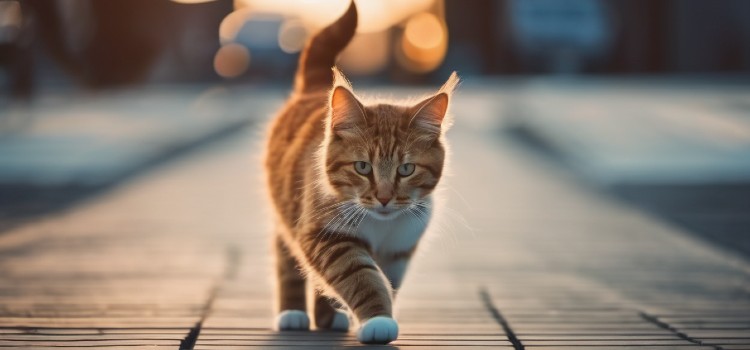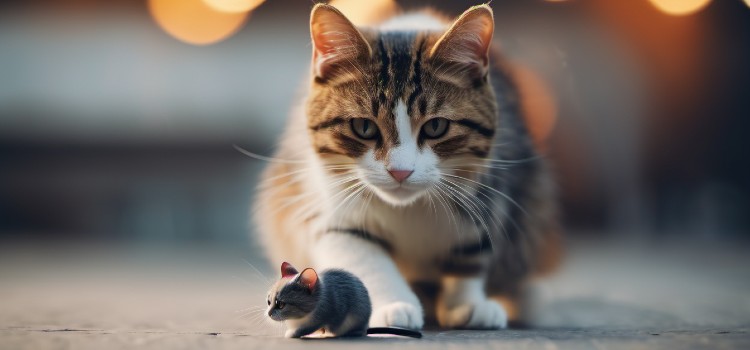As an Amazon Associate committed to the mission of improving the lives of our readers, Live-Clear.com receives a small commission from eligible purchases made through our affiliate links. This revenue enables us to keep producing insightful articles and other material.
Cats, those enigmatic and charming creatures that have captivated human hearts for centuries, are known for their incredible agility, aloofness, and flair for drama. If you’ve ever lived with a cat, you’ve probably witnessed your furry friend’s theatrical performances, from melodramatic yowls to Oscar-worthy acts of indifference. But why are cats so dramatic? What drives these feline divas to steal the spotlight, even when not the center of attention?
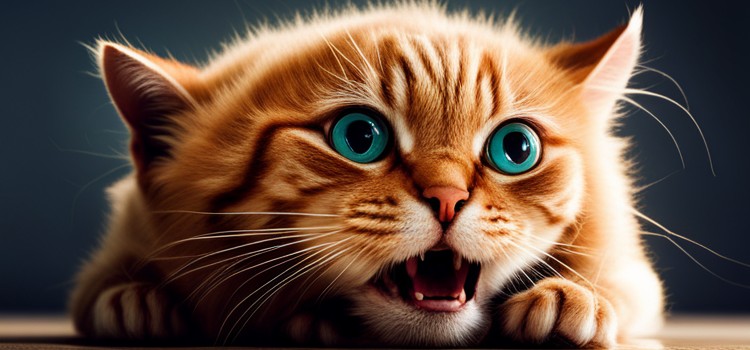
In this comprehensive blog post, we will explore the fascinating world of feline behavior, delving deep into why cats are often seen as the drama queens and kings of the animal kingdom. We’ll discuss their evolutionary history, instincts, and humans’ role in fueling their melodrama. So, let’s raise the curtain and embark on this captivating journey into the feline psyche.
The Evolutionary Origins of Feline Drama
Domestication: The Turning Point
To understand why cats are so dramatic, we must first journey back in time to explore their evolutionary history. Cats, specifically domestic cats (Felis catus), are descendants of wildcats. They share a common ancestor with the African wildcat, and their domestication dates back thousands of years. These wild ancestors were solitary hunters, and their survival relied on their ability to attract attention and resources.
As wildcats evolved into domestic cats, they retained some of their ancestors’ dramatic behaviors, such as yowling to signal their presence or expressing territorial aggression. While domestication brought about numerous changes, these dramatic instincts were passed down through generations.
Survival of the Fittest: A Legacy of Drama
Cats are natural predators, and their drama is vital to their survival strategy. Being dramatic helps them stake their claim on territory and resources. When a cat yowls loudly or fluffs to appear bigger and scarier, they attempts to intimidate potential threats and competitors. These dramatic displays are rooted in the instinct to establish dominance and protect their territory.
Theatrics of Communication: Why Cats Are So Expressive
Cats communicate through a wide range of dramatic behaviors. They employ both vocal and non-vocal methods to express their feelings and intentions.
Vocal Dramatics
- Yowling: You’re not alone if you’ve ever been jolted awake in the middle of the night by a loud, eerie yowl. Cats are known for their dramatic and often perplexing vocalizations. Yowling can have various meanings, from calling for attention to expressing discomfort or frustration. It’s their way of making sure they are heard.
- Purring: While purring is often associated with contentment, cats can also purr when in pain or distress. This versatility in purring showcases their dramatic range, making it difficult for humans to interpret their emotions accurately.
- Hissing: Hissing is a dramatic defense mechanism. It’s a warning sign that a cat feels threatened and will not tolerate further intrusion. This hiss is the feline equivalent of shouting, “Back off!”
Body Language: The Silent Drama
- Tail Position: A cat’s tail is a versatile instrument for expressing emotion. A raised tail generally indicates a friendly and confident cat, while a puffed-up tail signals fear or aggression. The dramatic tail fluff makes the cat appear larger and more intimidating.
- Ears: Cats use their ears to convey their mood. Forward-facing ears often signal curiosity or friendliness, while flattened ears signify annoyance, aggression, or fear.
- Eye Contact: Intense eye contact from a cat can be an act of dominance or an attempt to engage with you. Conversely, slow blinking is a dramatic display of trust and affection. Cats may also dilate their pupils dramatically when excited or agitated.

The Human Factor: How We Influence Feline Behavior
Anthropomorphism: Projecting Drama onto Cats
One of the primary reasons cats are perceived as dramatic is our tendency to anthropomorphize or attribute human emotions and behaviors to them. When our cats exhibit certain behaviors, we interpret them through our human lens, often attributing emotions like jealousy, spite, or even a sense of humor to our furry companions.
This anthropomorphism can lead us to view their actions as dramatic when, in reality, they may be responding to instincts or needs. It’s essential to remember that cats don’t have the same range of emotions as humans, and survival instincts and communication needs typically drive their dramatic behaviors.
The Influence of Attention and Reinforcement
Cats are notorious attention seekers. When they perform dramatic acts, they often receive attention from their human caregivers. Whether responding to a dramatic yowl at night or offering treats to stop a feline hissy fit, our responses can inadvertently reinforce their dramatic behavior.
Cats are quick learners and can associate their dramatic antics with getting what they want. As a result, they may continue to act dramatically to achieve their desired outcomes. It’s essential to balance providing attention and not reinforcing unwanted behaviors.
Decoding Common Queries About Dramatic Cats
Why do cats yowl in the middle of the night?
Cats yowl during the night for various reasons, including:
- Hunting Instincts: Cats are crepuscular animals, meaning they are most active during dawn and dusk. Yowling at night might be an expression of their hunting instincts.
- Attention-Seeking: Some cats yowl at night to get their owner’s attention. They may continue this dramatic behavior if they associate night-time yowling with attention or play.
- Health Issues: Yowling can indicate pain, discomfort, or an underlying health problem. Consult a veterinarian if your cat’s night-time yowling is unusual or persistent.
Can I train my cat to be less dramatic?
Yes, you can train your cat to exhibit less dramatic behavior through:
- Positive Reinforcement: Rewarding calm and desirable behaviors with treats or praise can encourage your cat to be less dramatic when they wants something.
- Enrichment: Providing mental and physical stimulation through toys, scratching posts, and interactive play can help reduce your cat’s need for dramatic attention-seeking.
- Consistency: Establish a routine and consistently respond to your cat’s behavior. Avoid reinforcing dramatic actions with attention.
How can I tell if my cat is genuinely upset or being dramatic?
Distinguishing between genuine distress and drama can be challenging. Look for signs like dilated pupils, flattened ears, and aggressive body language, which often indicate real distress. If your cat’s dramatic behavior is persistent or unusual, it’s wise to consult a veterinarian to rule out underlying health issues.
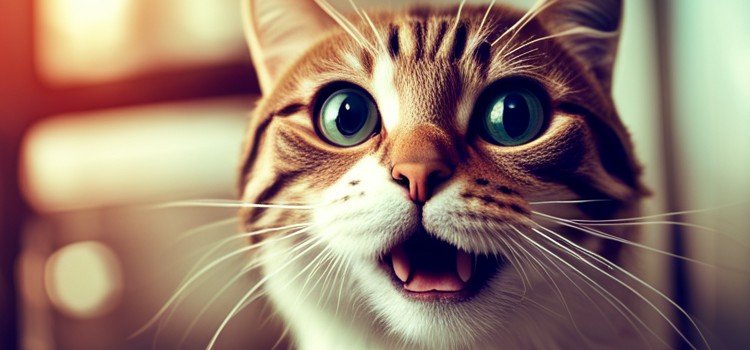
Conclusion
In conclusion, cats are naturally dramatic creatures with a rich history of survival instincts and communication techniques. While our human tendency to anthropomorphize can sometimes amplify their dramatic flair, understanding the reasons behind their behavior is crucial for maintaining a harmonious relationship with our feline friends. By recognizing and responding appropriately to their dramatic gestures, we can better appreciate the unique and captivating world of cats. So, the next time your cat puts on a dramatic performance, remember that it’s all part of their wild heritage and their way of communicating with you.
Cats will continue to be enigmatic and charming, keeping us entertained with their dramatic antics and revealing their more tender and authentic selves every so often. Embrace the drama, for it is a part of what makes cats such endearing companions in our lives.
FAQs
Cats can be sensitive to changes in their surroundings because they need stability and routine. Minor changes, such as rearranging furniture or introducing new objects, can be seen as potential threats to their territory. Cats might react dramatically to assess and adapt to these changes, ensuring their safety.
Yes, it’s normal for cats to exhibit these dramatic behaviors, even when no apparent threat is present. Cats are highly attuned to their surroundings and may perceive things that humans cannot, such as subtle sounds or scents. Their instinctual reactions, like hissing and growling, can be triggered by these imperceptible factors, leading to what seems like dramatic responses.
Cats are not throwing tantrums in the human sense but exhibiting learned behavior. Suppose a cat has realized that specific dramatic actions, like meowing insistently or knocking objects over, result in getting what they want (such as food or attention). In that case, they are likely to continue these behaviors. Cat owners need to establish clear boundaries and not reinforce unwanted dramatic behavior.
Cats knocking objects off surfaces may seem dramatic, but it is often a combination of play and curiosity. Cats have a strong hunting instinct, and these actions can mimic hunting behavior. Additionally, knocking objects can be a way for them to test gravity and explore their environment. Alternative outlets for these natural behaviors, like interactive toys, can help reduce this dramatic behavior.
While individual personalities can vary significantly, some cat breeds are known for being more vocal and dramatic than others. For example, Siamese cats are renowned for their talkative and expressive nature, often more dramatic in their vocalizations. Maine Coons, on the other hand, are known for their playful and outgoing demeanor. However, it’s important to remember that these breed tendencies can vary among individuals, and any cat, regardless of breed, can exhibit dramatic behavior based on their unique personality and experiences.
Understanding why cats exhibit dramatic behavior and providing appropriate responses and care can help you build a solid and loving bond with your feline companion while embracing their unique and captivating personalities.
Amazon and the Amazon logo are trademarks of Amazon.com, Inc, or its affiliates.

